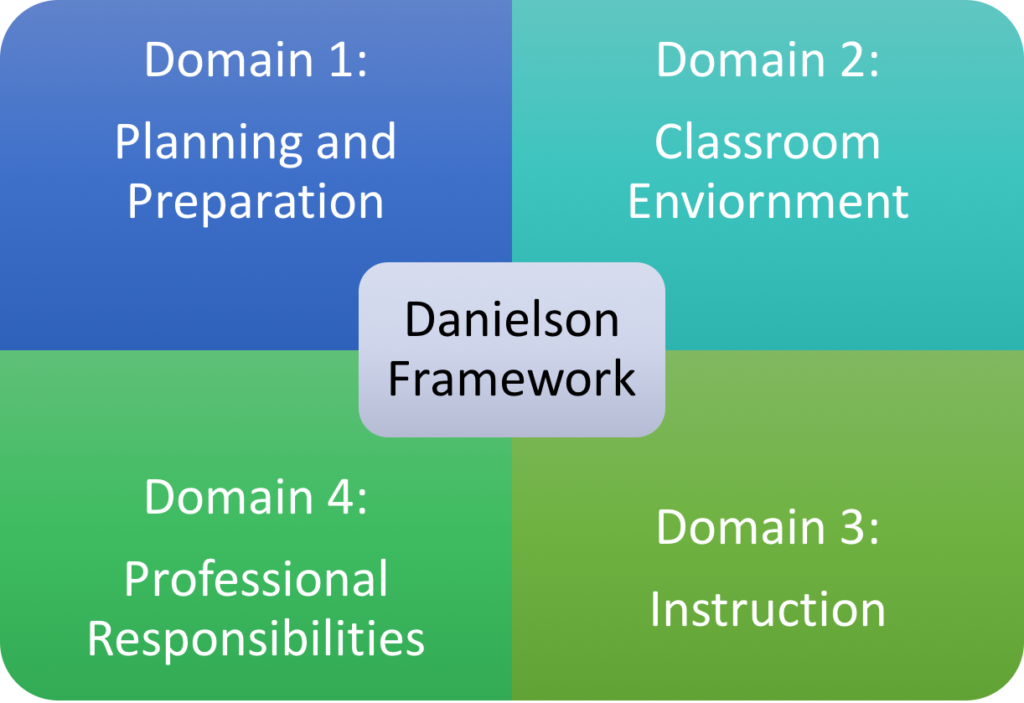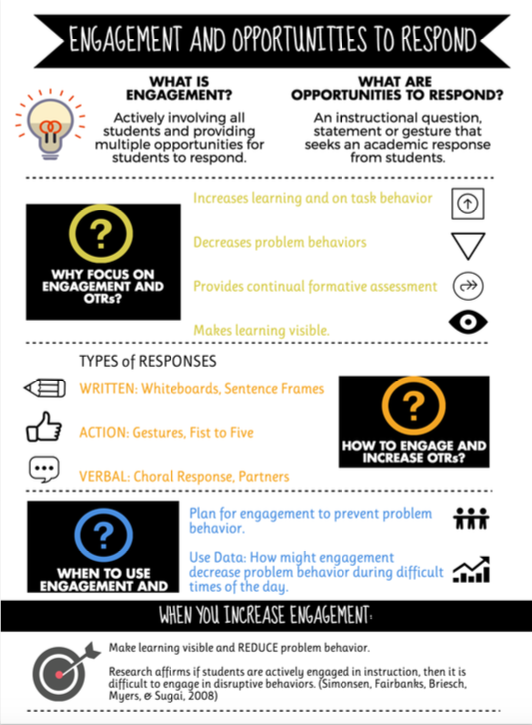Effective Classroom Practices
Student Engagement and
Opportunities to Respond
Engagement is actively involving all students in learning by providing students multiple opportunities to respond to instructional questions, statements or gestures.
"You cannot measure their thinking if you cannot make their thinking visible." ~Anita Archer
This video offers specific examples from LPS classrooms demonstrating how to engage students and provide opportunities to respond.
Listen to this narrated slideshow to learn more about engagement and providing opportunities to respond.
Connection to Appraisal

Danielson Framework
- Effective use of student responses and ideas (3b)
- High levels of student participation in discussion (3b)
- Learning tasks that require high-level student thinking and invite students to explain their thinking (3c
- Students actively “working,” rather than watching while their teacher “works” (3c)
- The teacher circulating to monitor student learning and to offer feedback (3d)
Strategies to Try:
- Based on data, plan to increase OTRs
- Include verbal, written and action responses in instruction
- Video tape instruction, count OTR and engagement strategies used, plan to increase OTR and engagement
- Utilize a pace that maintains student engagement
- Reflect on class vs. individual responses, plan for increasing class responses
- When lesson planning, intentionally plan the use of engagement strategies
- Plan an engagement strategy to increase of a specific appropriate behavior
- Utilize active supervision to promote student engagement, provide feedback and check for understanding
- Ask a coach or colleague to observe and give feedback
- Observe a colleague’s classroom and reflect on practice

